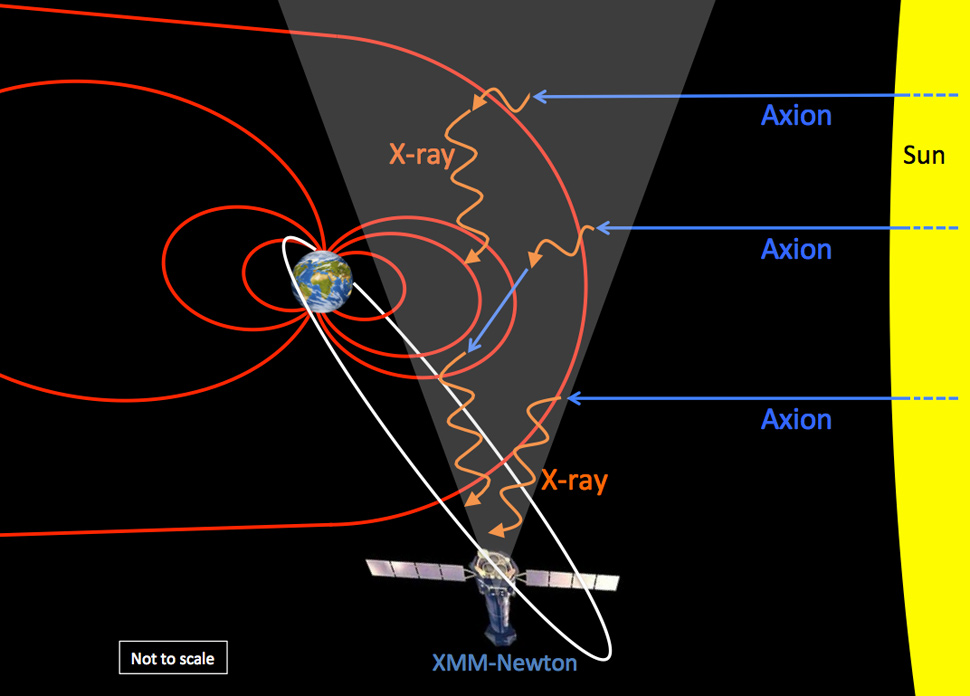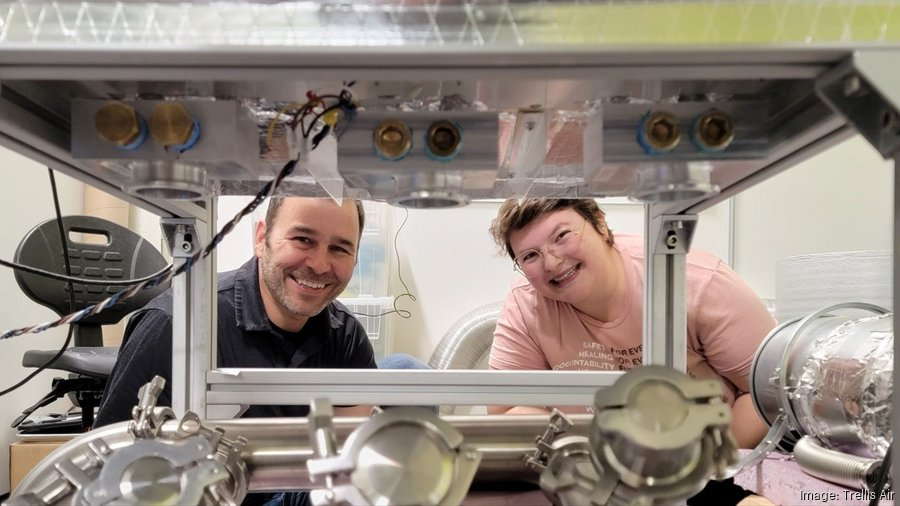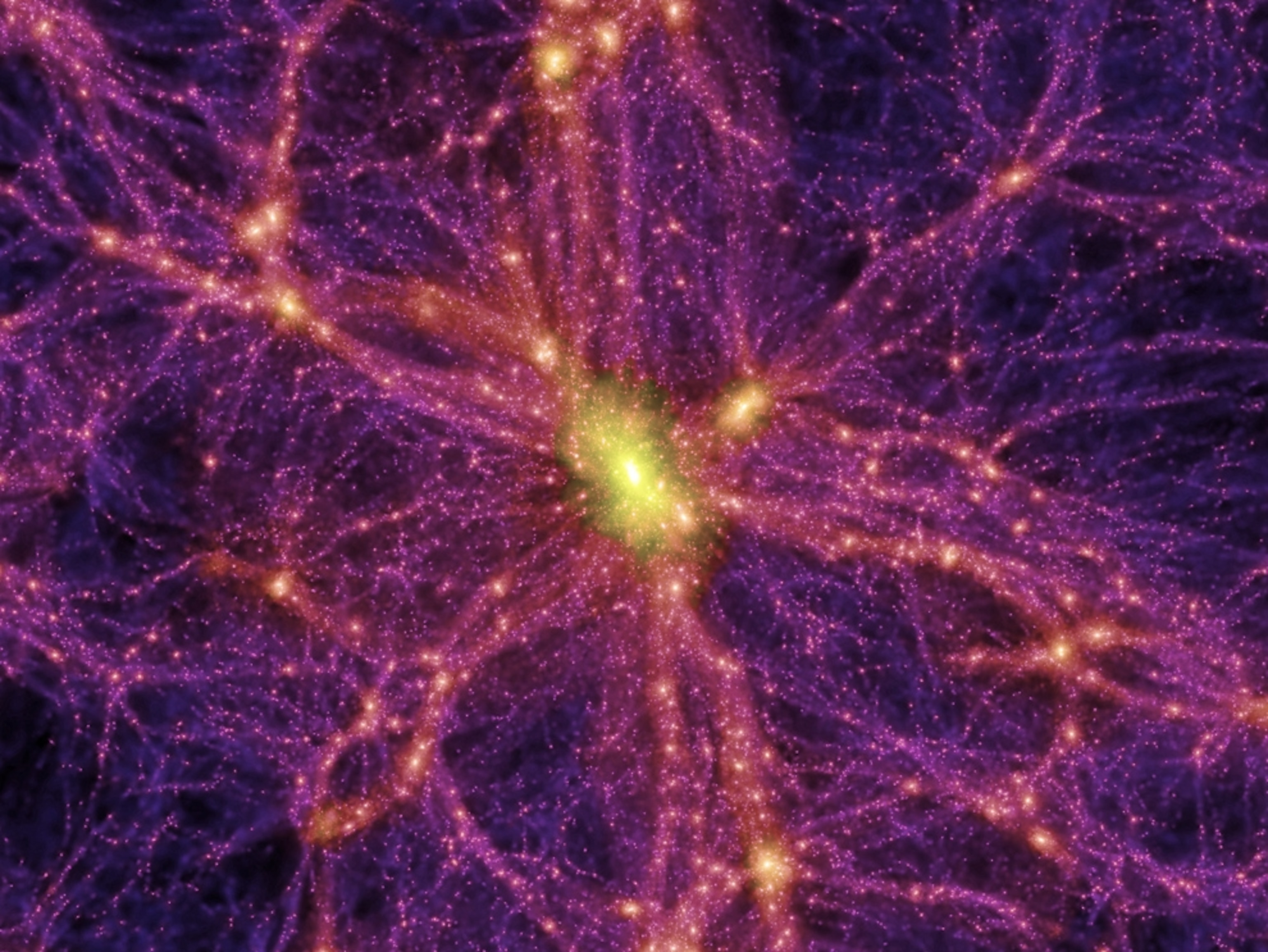
Axions: The Key to Unlocking Dark Matter Mysteries
Axions, a theoretical type of particle, have emerged as one of the most promising candidates in the quest to unravel the mysteries surrounding dark matter. As leading theories in particle physics suggest, these enigmatic particles could play a crucial role in explaining the universe’s unseen mass. Recent groundbreaking experiments have demonstrated the potential of axion quasiparticles, which simulate the elusive axion particles, to detect interactions that could confirm the existence of dark matter. The newfound ability to harness these quasiparticles represents a significant advancement in quantum technologies, providing researchers with an innovative tool to explore cosmic signals. By investigating the behavior and properties of axions, scientists are not only addressing foundational questions about the universe but also paving the way for future discoveries within the realms of physics and cosmology.
The pursuit of fundamental particles known as axions is at the forefront of modern scientific exploration, particularly in relation to the enigmatic entity of dark substance. The hypotheses surrounding these quasiparticles—acting as proxies for the elusive fundamental axion—offer a promising pathway in the field of particle physics. Researchers are increasingly focusing on the intricate dynamics associated with these particle-like excitations, seeing them as potential indicators of dark matter interactions. By leveraging cutting-edge quantum technologies and sophisticated detection methods, the scientific community aims to decode the subtle signals emitted by these particles. This intriguing journey into the heart of the cosmos signifies a pivotal shift in our understanding of the universe’s composition.
Understanding Axions: The Quest for Dark Matter
Axions represent an intriguing hypothetical particle that could explain the substantial dark matter that permeates the universe. Despite their elusive nature, the theoretical existence of axions has generated significant interest within the scientific community, particularly in the fields of particle physics and cosmology. These particles are believed to possess unique properties that allow them to interact with matter in a manner that could make them essential to our understanding of dark matter’s composition.
Researchers have been relentless in their pursuit of axions, as these particles might hold the keys to understanding some of the universe’s deepest mysteries. Their elusive characteristics challenge scientists to develop innovative detection techniques, and current advancements in technology promise to unveil potential signals that these particles emit, leading to groundbreaking discoveries that could reshape our comprehension of the cosmos.
Axion Quasiparticles: A New Frontier in Physics
The concept of axion quasiparticles has emerged as a significant breakthrough in elucidating the properties of axions. By creating simulations of these particles, researchers can study their characteristics and interactions within specific materials, such as manganese bismuth telluride. This material is particularly noteworthy due to its unique electronic and magnetic properties, making it an ideal candidate for housing axion quasiparticles and exploring their potential to detect dark matter.
Through meticulous experimentation and precision engineering, scientists have successfully induced axion quasiparticles to demonstrate their dynamic behavior. These quasiparticles serve not only as a tool for studying dark matter interactions but also pave the way for developing advanced quantum technologies. As researchers unlock the complexities of axion quasiparticles, they bridge the gap between theoretical physics and practical applications, highlighting the transformative potential of their discoveries.
The Role of Quantum Technologies in Axion Research
Quantum technologies are at the forefront of modern physics, and their applications in axion research illustrate the profound impact they have on fundamental sciences. By utilizing ultrafast laser optics and sophisticated measurement tools, researchers can observe the minute behaviors of axion quasiparticles, allowing for a more detailed understanding of their interactions. The ongoing experiments hold promise not just for particle physics but also for technological advancements that could emerge from these findings.
As the field of quantum technology evolves, it becomes increasingly clear that innovations in measurement and observation techniques play critical roles in the quest for dark matter axions. The continuous refinement of these technologies could lead to the development of highly sensitive detectors capable of identifying dark matter signals that eluded past efforts, ultimately guiding scientists toward confirming the existence of axions.
Harnessing Manganese Bismuth Telluride for Axion Detection
Manganese bismuth telluride is more than just a sophisticated material; it represents a critical component in the race to discover axions and understand dark matter. By shaping this material into a two-dimensional crystal structure, researchers create a robust platform for axion quasiparticles, which are essential for probing interactions with dark matter. This meticulous engineering requires extensive knowledge and care, as the material’s sensitivity necessitates a controlled environment to reveal its unique quantum properties.
The use of manganese bismuth telluride not only highlights the importance of advanced materials in contemporary physics but also showcases the heightened potential for future experiments. As researchers continue to explore the intricate dynamics of this substance, they augment their chances of observing dark matter interactions, which remain one of the most challenging pursuits in modern science. The fusion of advanced material science and quantum physics underscores the significant intersections that drive the exploration of the universe.
Experimental Innovations: Accessing Axion Dynamics
The innovative experimental techniques employed by researchers represent a landmark in accessing the dynamics of axion quasiparticles. The integration of cutting-edge laser technology facilitates a deep investigation into the behaviors of these elusive particles, allowing scientists to capture their movements with remarkable precision. This advancement not only reinforces theoretical models but also provides a tangible approach to confirming the existence of axions as a component of dark matter.
As researchers refine their experimental methodologies, they are uncovering novel interactions that could redefine our understanding of axions. The waves emitted from axion quasiparticles could serve as a cosmic signal, guiding researchers to detect dark matter in ways never before possible. Embracing a multidimensional approach to this research underscores the competitive and collaborative nature of the scientific community in addressing some of physics’ most daunting questions.
Implications of Axion Detection for Cosmology
Detecting axions could revolutionize our understanding of the universe and its composition. Currently, dark matter is one of the most pervasive mysteries in cosmology, making up about 85% of the universe’s mass yet remaining invisible to conventional observations. The confirmation of axions as a significant constituent of dark matter would not only validate existing theories but also open new pathways for exploration in both astrophysics and particle physics.
The potential to tune into specific frequencies related to axion particles could lead to what researchers call a ‘cosmic car radio’—an innovative detection apparatus that could capture the elusive signals of dark matter. This approach emphasizes the importance of multidisciplinary collaboration in advancing our understanding of the cosmos, enhancing the integration of quantum technologies, experimental physics, and cosmological theories.
The Interdisciplinary Approach to Axion Research
The groundbreaking research into axions and their quasiparticles showcases the power of interdisciplinary collaboration in scientific inquiry. By bringing together experts from condensed matter physics, material chemistry, and high-energy physics, the teams are achieving remarkable breakthroughs at the intersection of their respective fields. This synergy provides fresh insights into the fundamental principles that govern particle interactions while simultaneously progressing toward technological innovations.
An interdisciplinary approach allows researchers to tackle the complex challenges posed by axions, harnessing expertise and innovative methodologies from various scientific domains. Such collaborative endeavors not only deepen our understanding of dark matter but also pave the way for potential advancements in quantum technologies, enhancing the overall capabilities of research within the scientific community.
Future Directions in Axion Research
As the quest for axions continues, researchers are committed to refining their methods and methodologies to uncover further insights into dark matter. Future experiments will focus on probing the properties of axion quasiparticles while enhancing experimental conditions to ensure precision in their observations. These advancements could ultimately lead to the discovery of axions as fundamental particles, reshaping our knowledge of the universe.
The roadmap for future research includes exploring the intricate relationship between axions and dark matter, which could significantly impact the particle physics community. With collective efforts aimed at confirming the existence of these elusive particles, the prospects for groundbreaking discoveries in particle physics and cosmology are becoming increasingly attainable, promising a rejuvenated understanding of the fundamental constituents of the cosmos.
The Exhilarating Era of Dark Matter Research
Scientists today are experiencing an exhilarating time in the field of dark matter research, with the present volume of papers concerning axions rivaling that of pivotal discoveries like the Higgs boson before its confirmation. This surge in research reflects the tremendous interest and urgency surrounding the quest to unveil the mysteries of dark matter, emphasizing an active and dynamic scientific dialogue.
The anticipation surrounding potential discoveries in the coming years propels researchers forward, inspiring innovative methodologies and collaborative projects. As the scientific community closes in on confirming the existence of axions, the possibilities for reshaping our understanding of the universe grow, forging a path toward unlocking the many enigmas that continue to elude us.
Frequently Asked Questions
What are axions and why are they important in dark matter research?
Axions are hypothetical elementary particles that could explain the nature of dark matter, which comprises approximately 85% of the universe’s mass. Their detection could not only confirm their existence but also provide valuable insights into the composition and history of the universe.
How do axion quasiparticles help in the detection of dark matter?
Axion quasiparticles are simulated particles that can potentially interact with actual axions. When dark matter axions interact with these quasiparticles, it excites them, allowing researchers to detect the reactions as a way to confirm the presence of dark matter.
What role does particle physics play in the study of axions?
Particle physics is crucial in the study of axions as it provides the theoretical framework for understanding their properties and interactions. Ongoing research in this field aims to confirm axions as fundamental particles, which could significantly alter our understanding of the universe.
What advancements in quantum technologies are linked to axion research?
Recent experiments exploring axion quasiparticles may lead to new quantum technologies. For example, the novel interactions observed in axion polaritons could pave the way for innovative optical applications and enhanced detection methods for dark matter.
What experimental methods are being used to study axions and their quasiparticles?
Current research employs advanced techniques such as ultrafast laser optics and precise nano-fabrication to manipulate materials like manganese bismuth telluride. This approach enables researchers to create ideal environments for observing the dynamics of axion quasiparticles.
Can axions be used to unlock the mysteries of dark matter in the near future?
Researchers are optimistic that the study of axions could lead to significant breakthroughs in dark matter research. By tuning into specific frequencies emitted by axions, scientists hope to enhance detection capabilities, potentially uncovering dark matter’s secrets within the next 15 years.
How do cosmic signals relate to the search for axions?
Cosmic signals, particularly those at specific radio frequencies emitted by axions, are key to identifying dark matter. The detection of such signals could confirm the existence of axions and further elucidate their role in the universe’s dark matter composition.
What interdisciplinary approach is being utilized in axion research?
Axion research benefits from a multidisciplinary approach that integrates condensed matter physics, material chemistry, and high-energy physics. This collaboration enhances experimental methods and fosters innovative solutions to unlock the mysteries surrounding axions and dark matter.
| Key Points | Details |
|---|---|
| Existence of Axions | Axions are proposed as a solution to understand dark matter, which makes up most of the universe’s mass. |
| Groundbreaking Experiment | A team including Harvard researchers used quasiparticles to seek evidence of axions. |
| Significance of Findings | This research could advance our understanding of dark matter and lead to new quantum technologies. |
| Experimental Techniques | Manganese bismuth telluride was used in a 2D crystal form to detect axion quasiparticles. |
| Future Plans | The team aims to further investigate axion properties and improve detection techniques. |
Summary
Axions are emerging as a pivotal focus in the quest to unveil the mysteries of dark matter. Recent findings have provided innovative methodologies that could confirm their existence, thereby opening avenues for potential breakthroughs in both particle physics and quantum technology.








